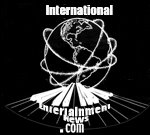Americans Slam News Media on Believability
Americans Slam News Media on Believability
Americans see:
-- Growing media attempts to influence public opinion and policies
-- Poor quality
-- A strong liberal bent in most media
-- Fox News, CNN and NBC as the most accurate
FAIRFIELD, Conn., Jan. 8 /PRNewswire-USNewswire/ -- A Sacred Heart University Poll found significantly declining percentages of Americans saying they believe all or most of media news reporting. In the current national poll, just 19.6% of those surveyed could say they believe all or most news media reporting. This is down from 27.4% in 2003. Just under one-quarter, 23.9%, in 2007 said they believe little or none of reporting while 55.3% suggested they believe some media news reporting.
"The fact that an astonishing percentage of Americans see biases and partisanship in their mainstream news sources suggests an active and critical consumer of information in the U.S.," stated James Castonguay, Ph.D., associate professor and chair of SHU's Department of Media Studies & Digital Culture. "The availability of alternative viewpoints and news sources through the Internet no doubt contributes to the increased skepticism about the objectivity of profit-driven news outlets owned by large conglomerates," he continued.
The perception is growing among Americans that the news media attempts to influence public opinion -- from 79.3% strongly or somewhat agreeing in 2003 to 87.6% in 2007.
And, 86.0% agreed (strongly or somewhat) that the news media attempts to influence public policies -- up from 76.7% in 2003.
Americans surveyed provided poor ratings for the national news media on six different characteristics measured. The average overall positive rating across all six characteristics measured was 33.4%. The highest positive rating, 40.7%, was recorded for quality of reporting followed by accuracy of reporting at 36.9% and keeping any personal bias out of stories (33.3%).
Other low positive ratings included: fairness (31.3%), presenting an even balance of views (30.4%) and presenting negative and positive news equally (27.5%).
"Americans know bias and imbalance when they see it and they don't like it. When most service organizations strive for consumer satisfaction ratings in the high eighties to low nineties, an overall positive rating of 40.7% is dismal," said Jerry C. Lindsley, director of the Sacred Heart University Polling Institute. He added, "Americans know that it's just not that hard to present both sides and keep personal bias at home."
By four-to-one margins, Americans surveyed see The New York Times (41.9% to 11.8%) and National Public Radio (40.3% to 11.2%) as mostly or somewhat liberal over mostly or somewhat conservative.
By a three-to-one margin, Americans see news media journalists and broadcasters (45.4% to 15.7%) as mostly or somewhat liberal over mostly or somewhat conservative.
And, by a two-to-one margin, Americans see CNN (44.9% to 18.4%) and MSNBC (38.8% to 15.8%) as mostly or somewhat liberal over mostly or somewhat conservative.
Just Fox News was seen as mostly and somewhat conservative (48.7%) over mostly or somewhat liberal (22.3%).
The most trusted national TV news organizations, for accurate reporting, in declining order included: Fox News (27.0%), CNN (14.6%), and NBC News (10.90%). These were followed by ABC News (7.0%), local news (6.9%), CBS News (6.8%) MSNBC (4.0%), PBS News (3.0%), CNBC (0.6%) and CBN (0.5%).
In 2003, CNN led Fox News on "trust most for accurate reporting" 23.8% to 14.6%.
EXPERTS AVAILABLE FOR COMMENT
-- Jerry C. Lindsley, director, Sacred Heart University Polling Institute
-- James Castonguay, Ph.D., associate professor and chair, Sacred Heart University's Department of Media Studies & Digital Culture
To speak with these experts, please contact Funda Alp at 203-396-8241 or alpf@sacredheart.edu.
How the Poll Was Conducted
The Sacred Heart University Polling Institute completed 800 interviews with residents nationwide between November 26 - December 5, 2007. The sample was generated proportional to population contribution in all 50 states. Statistically, a sample of 800 completed telephone interviews represents a margin for error of +/-3.5% at a 95% confidence level.
About Sacred Heart University
Sacred Heart University, the second-largest Catholic university in New England, offers more than 40 undergraduate, graduate and doctoral programs on its main campus in Fairfield, Connecticut, and satellites in Connecticut, Luxembourg and Ireland. Approximately 5,800 students attend the University's four colleges: Arts & Sciences; Education & Health Professions; University College; and the AACSB-accredited John F. (Jack) Welch College of Business. The Princeton Review includes SHU in its "Best 366 Colleges: 2008," U.S. News & World Report's "America's Best Colleges 2008" ranks SHU among the best master's universities in the North, and Intel rates it #11 among the nation's most "unwired" campuses. SHU fields 32 division I athletic teams, and has an award-winning program of community service. www.sacredheart.edu
For additional Sacred Heart University news, please visit http://www.sacredheart.edu/pressroom.cfm.
First Call Analyst:
FCMN Contact:
Source: Sacred Heart University Polling Institute
CONTACT: CONTACTS: Funda Alp, +1-203-396-8241, alpf@sacredheart.edu, or
John Galayda, +1-203-371-7751, galaydaj@sacredheart.edu, both of Sacred Heart
University
Web Site:
-------
Profile: intent




0 Comments:
Post a Comment
<< Home